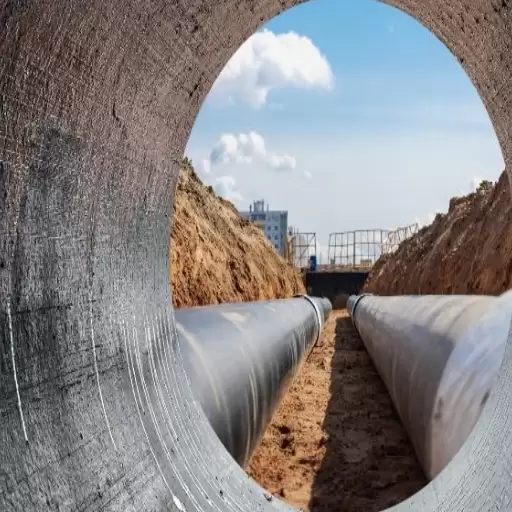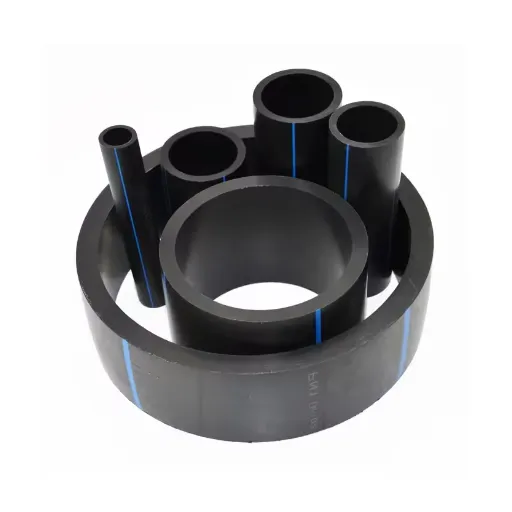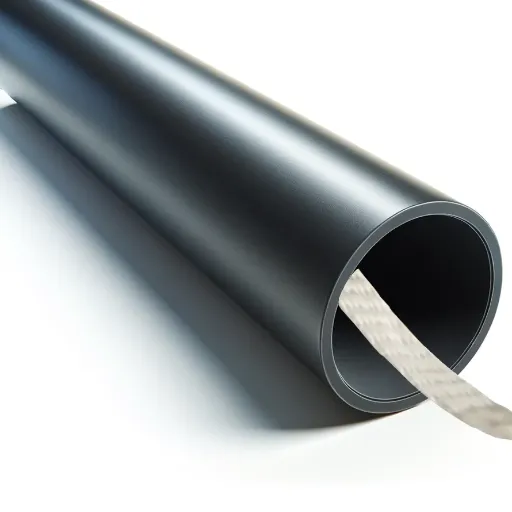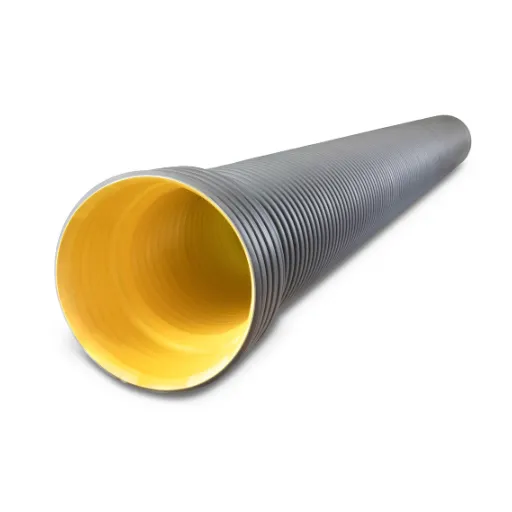When it comes to designing and maintaining an efficient water supply infrastructure, choosing the right underground water pipe is critical. Whether you’re planning a residential, commercial, or municipal project, understanding the intricacies of pipe installation, material durability, and the unique requirements of various environments can make all the difference in ensuring long-term functionality and cost-effectiveness. This guide will provide an in-depth look at the installation process, explore the most durable pipe materials on the market, and help you determine the best options for your specific underground water line needs. With so many factors to consider, this article aims to equip you with the knowledge to make informed decisions, save resources, and prevent costly mistakes in the future.
What Are the Different Types of Pipes for Underground Water?
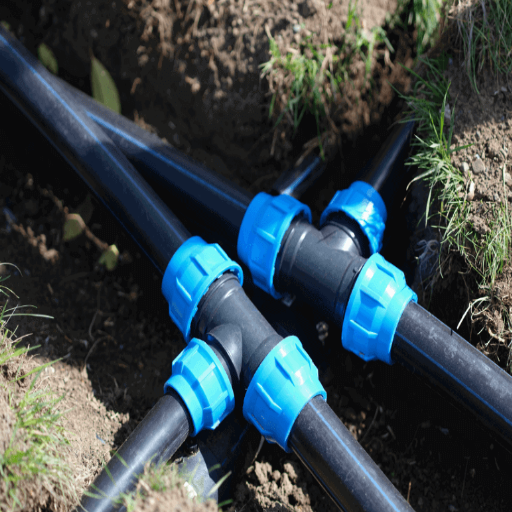
Understanding PVC and Its Applications
Due to low costs, simplicity of installation, and enhanced durability, Polyvinyl Chloride (PVC) is the most popular material choice for pipes in underground water systems. Even though PVC pipes effortlessly handle the challenges presented while transporting water under tough terrestrial conditions, they are extremely light and durable. They are resistant to rust and degradation by chemicals, which helps in ensuring longevity.
- Pressure Rating (PSI): PVC pipes are classified into different categories based on their capability to sustain internal water pressure. Such categories include Schedule 40, Schedule 80, or SDR (Standard Dimension Ratios) classes. For instance, Schedule 40 PVC pipes have a typical pressure limit of 280 PSI at room temperatures, which diminishes at higher temperatures.
- Diameter and Wall Thickness: The pipe’s diameter in standard applications is from 0.5 inches to 24 inches. The pressure rating borne by the pipe is directly proportional to the thickness of the wall; hence, the thicker the wall becomes, the stronger the pipe will be.
- Thermal Tolerance: PVC pipes possess a standard shape that can function effectively at temperatures as low as 0 degrees Celsius up to heights of 60 degrees Celsius. Even though they are not suitable for high-temperature applications, they are ideal when used for underground water installations.
- Flow Coefficient (C-Value): The strength of PVC is complemented by the ease at which water flows through it. The enhanced flow rate is made possible through a low C-value (150), which minimizes the loss of friction and increases system attractiveness.
- Lifespan: Under ideal soil conditions and normal operational stress conditions, when properly installed, PVC pipes can last from fifty to a hundred years.
PVC is ideal for moderate water pressure applications and other temperate environments with low risk to extremely high or low temperatures. This material is exceptional for private homes, commercial buildings, and agricultural supplies due to its practicality and cost-effectiveness.
Exploring PEX: Flexible and Durable
The modern plumbing solutions that PEX pipes possess are far more sophisticated than what existed some decades ago. The plumbing systems of modern architecture require more flexibility, durability and the ability to withstand temperature changes. PEX is favored among plumbers because installation is far easier than traditional methods due to the elimination of additional fittings, which lessens the chances of leakage. Above that, the pipes’ intrinsic structure means that, unlike more traditional methods, no additional elbows and angles are needed to plumb the system around corners, which can save quite a bit of time and money.
- Temperature Resistance: PEX will serve you well in both extremes and endure anywhere between -40 degrees Fahrenheit to a scorching 200 degrees Fahrenheit, making it perfect for any water system.
- Pressure Tolerance: Unlike a great deal of other establishment’s plumbing, the standard grade PEX pipes sustain 160 psi at 73 degrees Fahrenheit and 80 psi at 200 degrees Fahrenheit. Undoubtedly, these parameters take care of and place reliability in standard operational conditions no matter if it is for residential housing or large commercial buildings.
- Corrosion Resistance: Regardless of water pH submissions, PEX will not corrode over time. This will, in turn, lead to greater efficiency when compared to metal pipes.
- Lifespan: Up to 40 or even 50 years is the expected life of properly installed PEX pipes, but only if you protect them from excessive and prolonged UV rays, which degrade the materials over time.
For applications that require adaptable routing and consistent performance at differing temperatures and pressures, PEX is suitable to meet the requirements. It is widely used in radiant floor heating, potable water systems, and domestic plumbing because of its ability to maintain safety and durability standards while offering economical and timely installation solutions.
How Does Trenchless Pipe Installation Work?
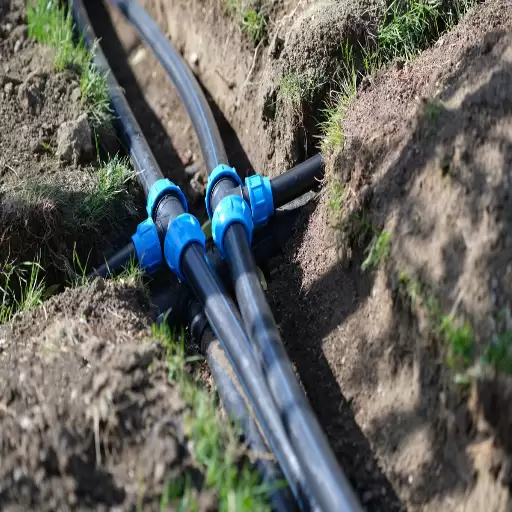
Advantages of Trenchless Technology
For many reasons, trenchless technology appears to be the go-to method for modern pipe installation and repair. First, it lessens the impact on the surface, as there is no need for excessive digging, which is most useful in cities or places that already have pipes. This greatly lessens the disruption caused to roads, landscaping, and buildings.
Trenchless methods from a technical standpoint are very effective in saving time and labor. The horizontal directional drilling (HDD), as well as, the cured-in-place pipe (CIPP) lining possess the capabilities of accurate installation and rehabilitation over long distances and difficult terrains. For HDD, accurate placement can be controlled up to a couple of hundred meters away under certain soil conditions while soil destabilization remains a low risk.
Moreover, with the reduction of soil removal and potential contamination risk, less soil is removed than other methods, so this approach can be considered environmentally advantageous. Furthermore, using materials such as HDPE and epoxy linings increases the durability of the method. These materials can withstand corrosion and mechanical stress. Like other linings, these materials need to comply with known technical standards and ensure long-lasting dependability.
Using trenchless solutions, I can also guarantee my approach is cost-effective, sustainable, and technically sound to modern piping problems. it meets the requisite of least interference in service maintenance while providing substantial and long-lasting infrastructure improvements or replacements.
Directional Drilling: A Detailed Overview
Directional drilling is a trenchless technology method that is used for the accurate placement of underground pipelines, conduits, and cables along a certain reference bore path. This method greatly reduces surface impact and is suitable for metropolitan, environmentally sensitive, and dense areas. Three main operations are performed: pilot hole drilling, reaming, and product pipe installation.
- Bore Path Accuracy: Alignment precision tracking systems are used to ensure that both depth and compliance with design specifications are within +/- 2% of borehole width.
- Drilling Mud Composition: Borehole stabilization, cutting removal, and friction reduction are generally accomplished through a mixture of water, bentonite, and polymer additives. The viscosity and yield point of the drilling fluid are adjusted based on the soil conditions, as governed by ASTM D6910/D6910M.
- Entry and Exit Angles: Entry angles fall between 8° and 20°, while exit angles are set to alleviate stress on the product pipe during installation. These are decided based on ground and project peculiarities.
- Pullback Force Limits: Values based on the material property of the pipe prevent overstressing the product pipe. For example, a limit can be the value of 21 MPa for HDPE suggested by ASTM D3350.
- Reaming Size: The reamer’s diameter is 1.2 to 1.5 times greater than the product pipe diameter so that there is sufficient gap for the return of the drilling fluid and smooth pipe setting.
- Pipe Material Properties: The material should satisfy at a minimum the industry standards. For example, HDPE pipes must comply with ASTM D3035 for SDR ratings or API standards for steel pipes.
Sophisticated installations, such as those beneath rivers or roads and within urban areas where open trenching is unfeasible, can be performed with directional drilling. This technology, if subjected to rigorous controls, is productive and ensures the reliability of the system for years.
What Are the Best Practices for Underground Water Supply?
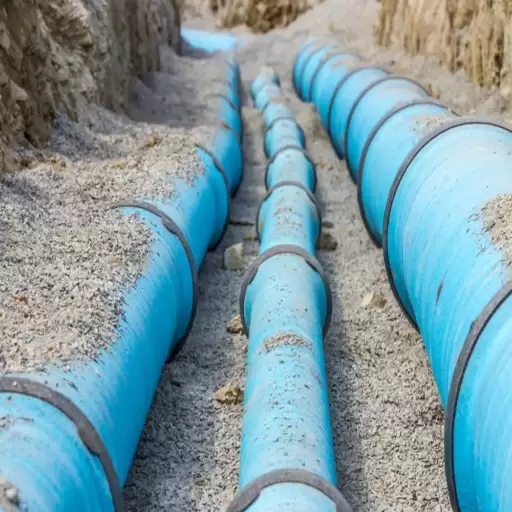
Ensuring Leak-Free Installations
Ensuring leak-free installations requires strict adherence to established industry standards, precise material selection, and proper installation techniques. First, the use of quality materials, such as High-Density Polyethylene (HDPE) pipes that meet ASTM D3035 specifications or steel pipes adhering to API standards, minimizes the risk of defects. Joints should be connected using industry-proven methods like butt fusion for HDPE or welded connections for steel, ensuring robust, reliable seals.
Secondly, pressure testing of the pipeline post-installation is critical. Hydrostatic pressure tests are commonly employed, where the system is pressurized to 1.5 times the maximum operating pressure (MOP) and monitored for a minimum duration of 2–24 hours based on the pipeline’s diameter and application. No pressure drop during this time indicates a leak-free system.
Finally, trench preparation and backfilling are significant factors. Trench bedding should comply with specifications for stable support, typically using granular material like sand to reduce the risk of damage due to shifting. Proper compaction of backfill material around the pipe is essential to prevent movement that could compromise joint integrity.
Adhering to these practices ensures a reliable, long-lasting underground water supply system, minimizing future maintenance and repair requirements.
Choosing the Right Fittings for Durability
Choosing the correct pipe fittings is important for maintaining the performance and reliability of any underground water supply system.
- Material Compatibility: The fittings used must be compatible with the pipe material such as PVC, HDPE, or ductile iron. For instance, PVC fittings are best suited for nonductile iron environments but replace well for mid-range pressure situations. Ductile iron, on the other hand, is more useful for high-range pressure environments.
- Pressure Rating (PN or PSI): The fittings must meet or exceed the operating pressure of the system to work properly. Some common standard examples could be PN10, PN16 in metric, or 150 PSI and 250 PSI in imperial. Choosing fittings with lower ratings will result in their failure to work during peak loads.
- Temperature Resistance: Fittings that can work with the expected range of temperatures of the system should be selected. As in the case of PVC fittings; they usually operate well with temperatures of 140°F or 60°C while metal-based fittings can operate at higher temperatures.
- Load Class and Impact Resistance: In regions with high external loading, for example, under the highways or in industrial regions, there is a requirement for heavy-duty fittings.
- Standard Compliance: Marked fittings should address other well-known standards such as ASTM, ISO, or ANSI for quality and the same aspects.
Considering these factors and other relevant technical standards can ensure that the water supply system is reliable over the long term.
How to Select the Right Fitting for Your Underground Water Project?
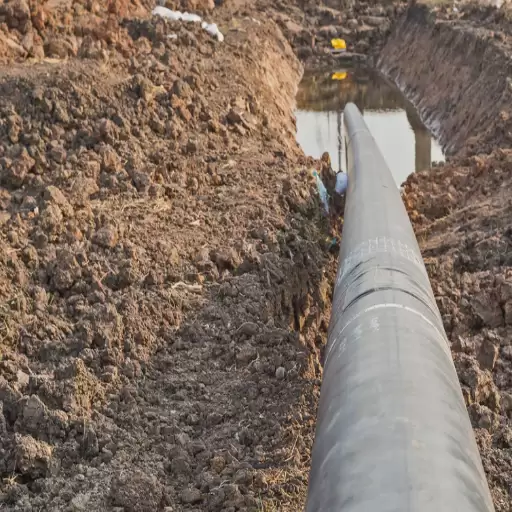
Comparing Threaded Fittings and Push-to-Connect Options
Threading joints are time-tested for the secure and traditional connections, whereas push-to-connect joints involve quick and no-tools installation.
| Aspect | Threaded | Push-to-Connect |
|---|---|---|
|
Setup |
Complex |
Simple |
|
Equipment |
Needed |
None |
|
Strength |
Robust |
Moderate |
|
Adaptability |
Low |
High |
|
Expense |
Medium |
Higher |
When to Use Brass Fittings for Enhanced Performance
Brass fittings are broadly used due to durability, corrosion resistance, and versatility. Hence, they fulfill essential mechanical reliability requirements, such as plumbing, automotive, refrigeration, and air conditioning systems. The metal is superb against hot temperatures and pressure, which otherwise tend to fluctuate in a working environment. Besides, it tends to stay away from corrosion induced by water, saline or NaCl solutions, and in a few cases, even alkalines-basically fast-track maintenance and replacement.
Another challenging feature of brass fittings is their ability to work well with various other elements and systems. They may connect with other systems, such as copper or even plastics, or steel, because of their deformability and sealing power. This is particularly important when custom assembly is necessary or the installation requires some modifications. Moreover, they are well-suited for potable water systems because of their reduced lead content and operate within the safety standards of ANSI/NSF 61 for drinking water. The prevention of leakage when constantly assembled and disassembled has always been their umbrella trademark.
Aside from performance, brass fittings may be better with regard to lifecycle of cost considerations than plastic or steel alternatives. Thus, though the initial costs may be a bit high, the energy efficiency of brass in terms of thermal conductivity and slow loss of material through degradation lends itself to far lower operating costs. Hence, the long-term profitability of brass fittings would make it the best choice when an operation or industry needs sustainability, efficiency, and a high-performing system for success. For any decision-maker looking for that elusive balance of strength, versatility, and longevity, brass fittings offer the most reliable results, even in the toughest applications.
What Are the Key Considerations for Underground Water Line Maintenance?
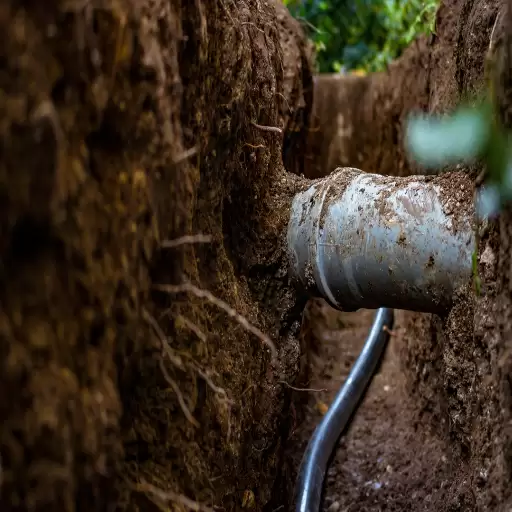
Identifying and Repairing Common Leaks
Leaks in residential or commercial plumbing systems result in the sheer waste of water, causing structural damage to the property and increased utility bills. Detecting the leak sources and repairing leaks at the earliest time possible is an important part of keeping a property in efficient and sustainable condition. Most leaks are typically found on faucets, toilets, pipes, and water heaters. However, each of these leak types has its peculiar challenges and requires different methods of detection and resolution.
- Faucet Leaks: The main cause of faucet leaks is worn-out washers, O-rings, or corroded valve seats. A slow-dripping faucet may be wasting twelve gallons of water in a week, hence making the repair necessary. In doing this, shut off the water supply, dismantle the faucet, and replace the worn component with another that is compatible. Use high-grade materials that resist corrosion to promote ba etter life for the repair.
- Toilet Leaks: Flapper leaks are common; the flapper valve can become defective and not seal properly, allowing water in the tank to flow continuously to the bowl. A dye test can confirm this problem—place a few drops of food coloring or water-soluble dye in the tank and wait for approximately 15 to 20 minutes; should the color get into the bowl, the flapper must be replaced. Make sure to use one that is durable and fits properly for long-term success.
- Pipe Leaks: Pipes develop leaks and aging due to corrosion or damage caused by the outside. To detect a hidden pipe leak, observe the water meter reading or look around damp spots on the walls, ceilings, or floors. Temporary methods may involve blocking the water flow with epoxy putty or pipe clamps, but a permanent repair usually entails replacing the section of pipe that is damaged and creating new connections using superior sealing methods such as Teflon tape or pipe thread compounds.
- Water Heater Leaks: Water heaters can commence leaking due to sediment accumulation, defective pressure relief valves, or corrosion of the storage tanks. Regularly inspect the tank and all valves for signs of wear or damage. Replace the faulty parts and flush the water heater to clear sediment buildup. If the tank is so badly corroded, then it is going to be cheaper to replace the whole unit than to fix it.
Modern diagnostic tools like acoustic sensors, infrared cameras, and pressure testing equipment indicate leaks correctly and help professionals determine the root causes. Maintenance of water plumbing systems ensures that water loss diminishes and the system lasts longer.
Routine Checks for Corrosion Resistance
Periodic assessments of corrosion resistance checking is one of the main goals that guarantees the integrity of the pipeline and extends its service life.
- Material Compatibility: Pipes and fittings must be made from either PVC, CPVC, or specially treated metals constructed from corrosion-resistant materials. These materials are used considering the environmental exposure and chemical composition of the water or fluid being transported.
- Protective Coating: Epoxy or polyethylene lining within the pipelines serves as a barrier to corrosion, especially in aggressive soil or water conditions, and such coatings or linings must be present and checked for voids within the pipelines.
- Electrochemical Corrosion Factors: The risk of galvanic corrosion for pipelines must also be checked in the metal ones. Dissimilar metals must be avoided in proximity because contact can accelerate degradation to avoid such situations.
- Environmental Exposure: Soils with a certain pH level, moisture content, and temperature bring about the likelihood of external corrosion for the pipes. Pipes must be designed or treated to resist temperature conditions to avoid further weakening materials within -20F to 100 degrees F and the surroundings.
- Cathodic Protection Systems: Electrochemical reactions that cause rusting need to be counteracted and so where applicable, proper functionality of cathodic protection systems must be adopted.
Reviewing these factors systematically with no doubt in mind helps me to address the many forms of corrosion I can encounter and implement different solutions to these issues to aid in preserving the performance and structural integrity of the pipeline system.
Reference sources
Frequently Asked Questions (FAQs)
Q: What is the most suitable material for underground water supply pipes?
A: HDPE and PVC pipes are often considered the most suitable for underground water supply. HDPE is flexible, durable, and resistant to corrosion, making it ideal for underground use.
Q: What are the advantages of using HDPE pipes for underground water supply?
A: HDPE pipes are flexible, resistant to corrosion, and have a long lifespan. They are also suitable for a cost-effective installation method and perform well in a wide range of temperatures.
Q: How does PVC pipe compare to other materials for underground water supply?
A: PVC pipe is a durable material that is lightweight and easy to install. It is resistant to corrosion and chemical exposure, making it a popular choice for underground water pipe installations.
Q: Why is PEX tubing considered suitable for underground irrigation?
A: PEX tubing is flexible and resistant to freezing, making it suitable for underground irrigation. It is also easy to install and can withstand temperature variations.
Q: What is the role of tracer wire in underground water pipes?
A: Tracer wire is used to locate underground pipes during maintenance or repair. It is laid alongside supply pipes and helps in detecting the exact location of the pipes without excavation.
Q: How does the inside diameter of a pipe affect the water supply?
A: The inside diameter of a pipe determines the flow rate of water. Larger diameters allow for more water to pass through, which is crucial for maintaining adequate pressure in a main line.
Q: What are common fusion methods used with HDPE pipes?
A: Common fusion methods for HDPE pipes include butt fusion, saddle fusion, and socket fusion. These methods create strong, leak-proof joints suitable for underground use.
Q: What is the importance of using a clamp in pipe installations?
A: Clamps are used to secure joints and fittings in pipe installations, ensuring a tight seal and preventing leaks, especially in a high-pressure environment.
Q: How does the frost line affect the installation of underground water pipes?
A: The frost line is the depth to which the ground freezes in winter. Pipes must be installed below this line to prevent freezing and ensure a continuous water supply.
Q: What PSI rating is recommended for underground water pipes?
A: For underground water pipes, a rating of 200 PSI is commonly recommended for ensuring durability and adequate pressure management in supply systems.



